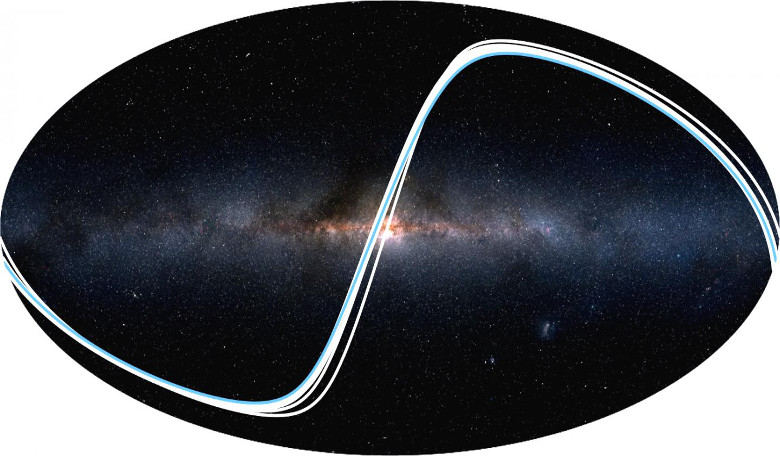While scientists on Earth strive to answer the age old question “is there life elsewhere in the Universe…,” if there was, then it stands to reason that alien scientists are standing on their own planet thinking exactly the same. So when civilisations from another world point their telescopes at the night skies, would they be able to spot us amongst the plethora of planets circling the Milky Way?
Turning exoplanet-hunting on its head, a group of scientists from Queen's University Belfast and the Max Planck Institute for Solar System Research in Germany have been looking at how an alien observer might be able to detect Earth using the same method we use to search for life elsewhere.
One of the approaches researchers use to spot exoplanets from Earth is a technique called the Transit Method; this basically relates to how a star’s light will dim by a measurable amount when a planet passes directly between its star and an external observer. It is a very effective technique and accounts for the way the vast majority of exoplanets have been discovered so far. But it isn't just useful for finding planets; it can also give us information about a planets temperature or the composition of its atmosphere.
Reversing this concept, the team considered how an alien observer would see the Solar System from afar, by identifying parts of the distant sky from where various planets in our Solar System could be seen to pass in front of the Sun. Strangely enough it was found that the smaller terrestrial planets had more of an affect on blocking out the light than our distant but more massive gas giant neighbours, I.e Jupiter, Saturn, Uranus, and Neptune.
"Larger planets would naturally block out more light as they pass in front of their star", commented lead author Robert Wells, a PhD student at Queen's University Belfast. "However the more important factor is actually how close the planet is to its parent star - since the terrestrial planets are much closer to the Sun than the gas giants, they'll be more likely to be seen in transit."
The team’s research shows that of the thousands of known exoplanets, sixty-eight worlds were identified where observers would see one or more of the planets in our Solar System transit the Sun. Up to three terrestrial planets at most could be observed from anywhere outside of the Solar System, however, not all combinations of three planets are possible.
Katja Poppenhaeger, a co-author of the study, adds, "We estimate that a randomly positioned observer would have roughly a 1 in 40 chance of observing at least one planet. The probability of detecting at least two planets would be about ten times lower, and to detect three would be a further ten times smaller than this."
Nine of these exoplanets are ideally placed to observe transits of Earth, unfortunately though, the initial analysis of these worlds suggest that they are inhabitable.
The search for detecting habitable exoplanets has really only begun from a human perspective, but the team estimate that there should be approximately ten (currently undiscovered) worlds that are capable of sustaining life as we know it, which are favourably located to detect the Earth.
This number is likely to increase as the hunt for habitable exoplanets in regions centred close to the plane of Earth's orbit and other terrestrial planets continues with missions such as the ongoing K2 mission of NASA's Kepler spacecraft.











